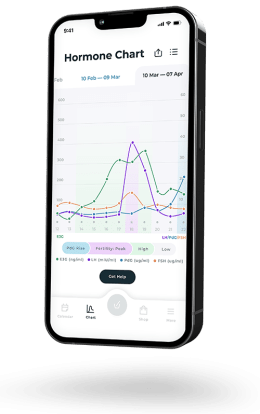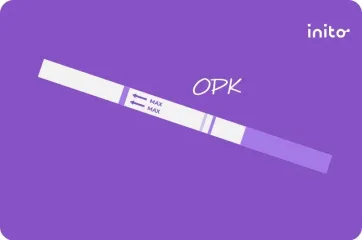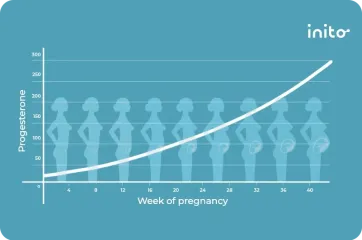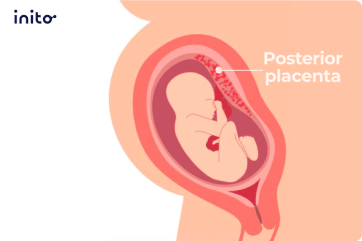Content table
Is bleeding normal during pregnancy? The short answer is yes. Light spotting can be normal, especially in early pregnancy.
Vaginal bleeding occurs in 15-25% of early pregnancies. And about 50% of women who experience bleeding in the first trimester will still go on to deliver healthy babies!
But heavy bleeding requires medical attention to ensure the safety of both the mother and baby.
Understanding the difference between spotting that’s normal and signs of serious pregnancy complications can make all the difference for your peace of mind and your baby’s health.
So, let’s get into it!
Key Takeaways
- Light bleeding during pregnancy is common, especially if it’s bleeding in early pregnancy. But heavy bleeding should always be evaluated right away.
- Bleeding during pregnancy can range from harmless implantation bleeding to serious conditions.
- Research shows that 67% of pregnancy bleeding occurs during the first trimester. The later stages of pregnancy show lower rates.
- Blood tests, pelvic exams, and ultrasounds help doctors determine the causes of bleeding.
- Any bleeding in the second or third trimester requires immediate medical attention. It may be a sign of life-threatening complications.
What Is Pregnancy Bleeding?
Pregnancy bleeding refers to any vaginal bleeding that happens during pregnancy. It includes the time from implantation through delivery. And most of the time, it’s normal.
What’s normal bleeding versus concerning?
The characteristics of normal bleeding include:
- Light pink or brown color
- Lasts 1-3 days
- No clots
- No severe camping
Signs that are concerning include:
- Bright red, heavy flow
- Go through one pad per hour
- Accompanied by severe pain
- Contains tissue or large clots
If you experience any concerning signs, it’s vital that you reach out to your healthcare provider.
How Common Is Bleeding During Pregnancy?
A comprehensive study that looked at pregnancy bleeding patterns found that:
- 67.1% of all pregnancy bleeding cases happen in the first trimester
- 20.1% of all cases happen in the second trimester
- 12.8% happen in the third trimester
These numbers show that bleeding becomes less common as pregnancy progresses. But it also becomes more serious. Research confirms that early pregnancy bleeding often resolves without complications. That doesn’t mean it isn’t scary! But don’t assume the worst if you see bleeding during your first trimester. Always check with your doctor to get more information about your bleeding.
What Are the Causes of First-Trimester Bleeding? And What Do They Mean?
Your first trimester consists of the first 13 weeks of pregnancy. As we talked about earlier, first-trimester bleeding happens to about 25% of pregnant women, and most cases resolve without any issue.
Here are some of the causes of bleeding during the first trimester.
1. Implantation bleeding
This bleeding happens 6-12 days after ovulation, but not every pregnant woman experiences it. In fact, only about 25% of pregnancies involve implantation bleeding.
Implantation bleeding may happen when the egg implants into the uterine wall. This can cause small blood vessels to break, thus the bleeding.
Signs of implantation bleeding:
- Light pink or brown color
- Lasts 1-3 days max
- Occurs before expected period
- No cramping or mild cramping only
- No clots present
- Much lighter than normal periods
Learn more: Implantation Bleeding vs. Periods | What Does Implantation Bleeding Look Like?
2. Cervical changes
Your cervix is a key part of pregnancy. Its job is to protect the growing fetus. Pregnancy increases blood flow to the cervix, causing it to become more fragile and prone to bleeding. In fact, it’s not uncommon to have light bleeding after intercourse or a pelvic exam.
3. Subchorionic hemorrhage
This happens when blood collects between the uterine wall and the outer membrane (chorion) surrounding the fetus. It’s most commonly seen at 10-20 weeks and accounts for 11% of first-trimester bleeding cases.
Some of the factors that make someone more prone to subchorionic hemorrhage or hematoma include:
- Presence of a uterine malformation
- History of recurrent pregnancy loss
- Pelvic infections
Signs of subchorionic hemorrhage:
- Light to moderate bleeding
- Brown or dark red color
- Intermittent bleeding
- May come with mild cramping
This may sound scary, but actually, most subchorionic hematomas resolve on their own! They do require regular monitoring through ultrasound to make sure they’re shrinking rather than growing.
4. Early pregnancy loss and miscarriage
Heavy bleeding in the first 13 weeks, especially when accompanied by pain, is linked to a higher risk of miscarriage. A miscarriage is a spontaneous pregnancy loss that happens before 20 weeks.
But, due to the nature of the timeline, it might be tricky to tell the difference between menstrual bleeding versus implantation bleeding, versus a miscarriage that happens between 5-6 weeks.
Know more: Implantation Bleeding vs. Miscarriage: Know the Difference
Understanding the differences between these kinds of bleeding is important! Here’s a table for reference.
Characteristic | Period Bleeding | Implantation Bleeding | Miscarriage |
Flow | Regular to heavy flow | Light Spotting (like an “Early light period”) | Starts light and then becomes heavy (like a “late heavy period”) |
Duration | 2-8 days | 1-3 days | Generally, the farther along the pregnancy, the greater the bleeding.
Usually in the early stages, it lasts for about a week and is just like a prolonged period.
As the weeks of the pregnancy progress, the bleeding becomes heavier and longer |
Color | Bright red or brown | Light pink and brown | Dark red |
Clotting | Clots may be occasionally present | No clots present | Tissue or jelly-like clots are usually present (grayish or white in color) |
Timeline | Predictable timeline (occurs around the same time each cycle) | Earlier than your expected period – Usually 8-10 DPO, but can be anywhere from 6-12 DPO | Can happen anytime before 20 weeks |
An early pregnancy loss at around the 5-6 week mark is likely either a chemical pregnancy or a missed miscarriage.
Chemical Pregnancy
A chemical pregnancy (a.k.a. early miscarriage) happens when the embryo stops developing shortly after implantation. They happen so early that the gestational sac isn’t even visible on an ultrasound.
Know more: Chemical Pregnancy: Quick Guide & Need to Knows
Missed Miscarriage
A missed miscarriage happens when the embryo stops growing and the fetus’s heartbeat stops. This is seen between weeks 5 and 12. But they can happen as late as 20 weeks of pregnancy.
This type of miscarriage is usually caused by a defect in the fetus, uterus, or placenta. Defects in the fetus are the most common and account for 50% of the miscarriages.
Know more: Silent Loss: Causes and Treatment of Missed Miscarriage
5. Ectopic pregnancy
An ectopic pregnancy is when the embryo gets implanted outside the uterus (also called an extrauterine pregnancy). This is seen most commonly in the fallopian tubes. And it’s seen in about 1.3-2.4% of pregnancies.
Extrauterine pregnancies are usually diagnosed in weeks 6-9 of pregnancy.
Signs of an ectopic pregnancy include:
- Light to heavy bleeding
- Aching pain in the lower abdomen
- Secondary Amenorrhea
If left untreated, it can cause severe pregnancy complications and can even be life-threatening for the mother.
If you think you may be having an ectopic pregnancy, it’s important to visit your doctor right away.
6. Gestational trophoblastic disease (GTD)
Gestational trophoblastic disease (“molar pregnancy”) is a type of condition where a rare abnormal tumor may grow early on in pregnancy. It arises from the tissue that would normally form the placenta.
Signs of GTD include:
- Heavy bleeding
- Discharge
- Uterus appearing larger than what’s expected for your gestational age
- Severe bouts of nausea and vomiting
7. Infections
Many types of infections can be the causes of bleeding. These could include a UTI, yeast infection, bacterial vaginitis, or an STI.
These infections can make the cervix or vagina more sensitive and prone to bleeding.
Signs of infection include:
- Bleeding
- Strange odor
- Vaginal itching
- Burning during urination
- Pain during sex
If any of these symptoms appear with bleeding in early pregnancy, it’s a good idea to contact your doctor.
Here’s something key to remember:
Mild spotting or bleeding in early pregnancy can be normal. But heavy bleeding or any recurring bleeding may indicate an underlying issue. Always consult your healthcare provider, who can assess what’s going on and recommend a treatment plan.
What Are the Causes of Second and Third-Trimester Bleeding? And What Do They Mean?
Unlike bleeding in early pregnancy, bleeding in the second and third trimesters is rarely normal. It often points to more serious pregnancy complications that need immediate medical attention.
Bleeding in the second or third trimester is usually associated with the following causes.
1. Placenta previa
Placenta previa is when the placenta gets implanted in the lowest part of the uterus. This partially or completely covers the opening to the cervix.
As your pregnancy progresses, the uterus stretches and grows, and the placenta usually moves toward the top of the womb. By the third trimester, the placenta should be near the top so the birth canal is clear for delivery.
Signs of placenta previa include sudden vaginal bleeding during pregnancy and cramps at the end of the second trimester or the beginning of the third trimester.
2. Placental abruption
Placental abruption is a type of medical emergency where the placental tissue detaches from the uterine wall before delivery.
Signs of placental abruption include:
- Vaginal bleeding
- Painful uterine contractions
This can affect the blood and oxygen supply to the baby, causing fetal distress and severe blood loss for both the mother and the baby. This is a medical emergency that requires immediate care.
3. Cervical insufficiency
Cervical insufficiency is when the cervix painlessly opens during the second or third trimester. This can lead to preterm birth.
Common risk factors of cervical insufficiency are a history of cervical surgery, miscarriage, or a shortened cervix. It could also happen due to defects in the function or structure of the cervix.
This condition can cause bleeding in pregnancy and lead to a serious pregnancy loss.
4. Cervical ectropion
Cervical ectropion is a common and harmless condition where the cells from the inside of the cervix grow on the outside. The cervix is highly responsive to estrogen during this time. And that makes these cells extra sensitive. This can make the cervix bleed more easily.
Signs of cervical ectropion include:
- Light bleeding or light spotting after sex
- Excessive white or yellow discharge
5. Preterm labor
Preterm labor is defined as cervical changes that happen in response to uterine contractions between weeks 20 and 36 of pregnancy.
Signs of preterm labor include:
- Contractions every 10 minutes or more often
- Pressure in the pelvic (hip) area
- Low, dull backache
- Cramps that feel like menstrual cramps
- Abdominal cramps without diarrhea
- Change in vaginal discharge (leaking fluid or bleeding from the vagina, a.k.a. bloody show
A bloody show is a normal sign of impending labor. But if it happens before 37 weeks, it needs to be reported to a doctor right away.
6. Injury or trauma
Trauma to the abdomen (like a fall or accident) could cause placental abruption and result in bleeding in pregnancy.
Any injury to the abdomen, no matter how much bleeding you see, should be evaluated by your doctor immediately.
Unlike first-trimester bleeding, bleeding in the second or third trimester is not really normal. It usually points to a serious pregnancy complication. To find out what’s causing the bleeding, you may need to have a pelvic exam, an ultrasound scan, or blood tests.
Any bleeding at this stage should be treated as an urgent warning sign and evaluated by a healthcare provider right away to protect both the mother and the baby.
Precautionary Measures To Prevent Bleeding During Pregnancy
Some instances of vaginal bleeding during pregnancy are routine and harmless. However, others may need prompt medical attention.
Understanding and recognizing abnormal bleeding is important, as it may be your guide to getting the right treatment.
Not all bleeding can be prevented. But there are several steps that can help reduce risks and ensure early detection of complications.
1. Regular pregnancy checkups
- Ultrasound scans help evaluate the placenta, uterine wall, and overall fetal development. These scans can detect potential issues early and allow for timely intervention.
- Laboratory tests monitor blood values, hormone levels, and infection risks. This helps in identifying concerns like anemia or hormonal imbalances that may increase bleeding risk.
- Routine vaginal exams will aid in spotting early signs of complications.
2. Healthy lifestyle and nutrition
- Get plenty of rest
- Maintain a balanced diet full of vitamins and minerals. This supports both maternal and fetal health.
- Avoid sexual intercourse if you’ve encountered bleeding once
- Folic acid and iron supplements are especially important. They promote healthy development and reduce the risk of anemia.
- Avoid alcohol, smoking, and illicit drugs. These habits increase the risk of miscarriage, placental problems, and premature birth.
- Reduce chronic stress. Studies show chronic stress affects your emotional health and also has a direct biological impact on the uterus and placenta.
- Always follow moderate, doctor-approved physical activity and adequate hydration.
3. Early detection through monitoring
- Regular blood tests can help your healthcare provider detect your blood type and the level of pregnancy hormones. This helps ID if there are any possible chances of bleeding besides the usual spotting.
- Tracking even mild spotting, including color, flow, and frequency, is a good idea. Reach out to your doctor if any abnormality is suspected.

FAQs
Some light bleeding is common, especially a few drops of pink or brown spotting in the first trimester.
However, any heavy bleeding while you’re pregnant (soaking through a pad in an hour), bright red blood, or vaginal bleeding with clots or pain is not normal and should be evaluated by a healthcare provider right away!
It is very unlikely that you can bleed like a menstrual period and still be pregnant.
Some women do experience period-like bleeding during early pregnancy. But it’s usually not as heavy or long-lasting as a normal period.
If you are experiencing heavy bleeding, it may be a sign of a miscarriage or other complication. You should contact your doctor.
Yes. Bleeding does not always mean that you will have a miscarriage.
Up to 50% of women who experience bleeding in the first trimester go on to have healthy babies!
The causes of bleeding can be from hormonal changes, cervical irritation, or even implantation bleeding, which are not signs of a miscarriage.
It can be.
Many women experience bleeding at 6 weeks of pregnancy. It’s often caused by harmless factors like hormonal changes or increased sensitivity of the cervix.
However, bleeding at this stage can also be a sign of a miscarriage or ectopic pregnancy. So you should always contact your doctor to have it checked out.
Was this article helpful?
Assessment and management of bleeding in the first trimester of pregnancy
The study of outcome of pregnancy with first trimester vaginal bleeding and its complications
The structure and function of the cervix during pregnancy
Association Between First-Trimester Vaginal Bleeding and Miscarriage
The Diagnosis and Treatment of Ectopic Pregnancy

















